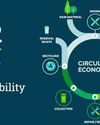Why Does A Company Need Good HR Practices?
October 2020
|Textile Value Chain
As an owner/ MD of the company you could be thinking why you need good HR systems and processes for your company. A well-functioning HR system is aligned to the business strategy and goals and acts as a competitive advantage for your organization and results in improving both the ‘Top’ and ‘Bottom’ line of business. To answer your question “why?” take the test of checking some signs that existing HR systems and processes need an overhaul.

a. Inability to recruit and select the required team members.
b. The person whom you selected thinking he or she is a great performer is unable to meet the requirements for the role for which he/she was hired.
c. High attrition amongst the high performing employees of the company.
d. Issues with on time delivery and quality of product and services provided to customers leading to low customer satisfaction.
e. Team members not performing to the standard expected of them.
f. As an owner or MD you need to get involved in things which the team member
g. Multiple issues come up in the workplace amongst employees which often need your intervention to resolve.
h. Employee satisfaction and motivation is consistently low.
i. If things go wrong, blame games start with no one taking ownership of getting the issue resolved.
A typical HR system would include the following processes:
a. A process which covers Recruitment, selection and onboarding.
b. Policy framework which clearly defines expectations the organization has, from the employee and what the employee will get from the organization while at the same time aligning with compliance requirements and statutory requirements.
c. An objective Performance Management Process (PMP) which helps in clearly identifying your high performers, the steady contributors and the not so great performers.
d. A well-defined Compensation, Benefits and Incentive framework.
e. Training and Development to ensure constant up-gradation and skill-building of the employees.
f. Employee engagement framework to keep the employees motivated and willing to do more for the organization with a linked reward and recognition process.
g. Talent management and succession management framework.
h. To build the desired organization culture or as it is commonly understood, the way things are done in a company or shared belief of the employees.
هذه القصة من طبعة October 2020 من Textile Value Chain.
اشترك في Magzter GOLD للوصول إلى آلاف القصص المتميزة المنسقة، وأكثر من 9000 مجلة وصحيفة.
هل أنت مشترك بالفعل؟ تسجيل الدخول
المزيد من القصص من Textile Value Chain

Textile Value Chain
EPR in Textiles: Turning Compliance into Opportunity
When the EU Comes to Panipat, It Means One Thing — The World Is Watching
3 mins
November 2025

Textile Value Chain
European Parliament Delegation Visits Panipat Recycling Cluster to Strengthen India-EU Collaboration on Circular Textiles
A high-level delegation from the European Parliament's Committee on International Trade (INTA) visited the Panipat Textile Recycling Cluster — India's largest hub for recycled textiles and circular manufacturing — during their official visit to India.
1 mins
November 2025

Textile Value Chain
Paramount Instruments: Where Innovation Turns Testing into Joy
At Paramount Instruments, innovation isn't just a Pursuit- it's in our DNA.
2 mins
November 2025
Textile Value Chain
Crafting the Future: LMW & Hami Weavelon pioneer Compact Spinning in Polyester
Manmade fibres today form the backbone of the global textile industry, driven by their versatility, performance, and ability to meet the rising demand for both everyday and specialised applications.
3 mins
November 2025

Textile Value Chain
Data is the New Thread: Weaving India's Textile Sector into a Circular Powerhouse
On November 13, 2025, at the 12th Edition of the India and Sustainability Standards (ISS) International Dialogue and Conference held at Bharat Mandapam in New Delhi, representatives from the Home Exporters Welfare Association of India (HEWA) joined industry leaders, policymakers, and international organizations to address a pressing question: How can India's textile sector meet emerging global data requirements while supporting its MSME backbone?
3 mins
November 2025

Textile Value Chain
Rieter Winding Suction Nozzle Upgrade: More Yarn, Less Energy Use
After upgrading the suction nozzles on their 32 winding machines, Sanyang Textile Co., Ltd., China, saw an increase in yarn production of 3% and a reduction of 13% in energy use. The flow-optimised, aerodynamically designed suction nozzle enables efficient upper yarn search and pickup from the package. This results in a 55% reduction in red light percentage and a significant reduction in the operator's workload.
1 mins
November 2025

Textile Value Chain
EU's Extended Producer Responsibility (EPR) Law and Its Implications for India's Textile Industry
The European Union (EU) has approved a new Extended Producer Responsibility (EPR) framework for textiles. This is a major regulatory shift that makes fashion brands and producers accountable for their products' entire lifecycle, from design and production through collection, sorting, recycling and disposal.
9 mins
November 2025

Textile Value Chain
GTE Ahmedabad 2025 Concludes Day 3 with a Huge Footfall
The 38th Garment Technology Expo (GTE) Ahmedabad 2025, co-located with the Lace & Trims Show, wrapped up its third day on an impressive note, recording around 9,700 B2B visitors. The strong industry turnout reaffirmed the expo's role as one of the most influential and business-driven platforms for garment and apparel technology in the western region.
2 mins
November 2025

Textile Value Chain
Reinterpreting Korean Street Fashion through Sustainable Design Practices
A Path through Eco-conscious Urban Fashion
7 mins
November 2025

Textile Value Chain
3D Printing in Textiles Manufacturing: A Game-Changer in Design, Sustainability, and Efficiency
The global textile and apparel industry is undergoing a radical transformation due to the convergence of digital design, advanced material technology, and next-generation manufacturing. Of the latter, few have greater potential to change how textiles are made today than additive manufacturing, better known as 3D printing.
5 mins
November 2025
Translate
Change font size

